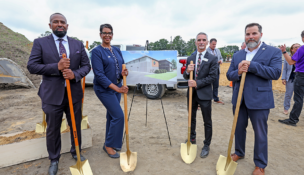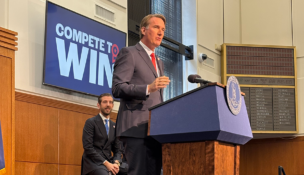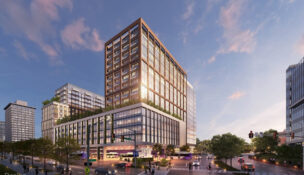States join forces to battle Beltway bridge bottleneck
When the governors of Virginia and Maryland announced plans in November to replace the aging American Legion Bridge, it may have sounded like a chorus of angels to woebegone commuters who make their way across the Potomac River each weekday.
“A new bridge means commuters will get to work and back home faster,” said Gov. Ralph Northam. “Our teams have identified a way to fix one of the worst traffic hotspots in the country.”
The bridge has been operating beyond its capacity for nearly four decades, according to the Virginia Department of Transportation. About 235,000 vehicles travel on it daily, a nearly 400% increase in traffic since the bridge opened in 1962. And with the region’s population expected to grow by another 1.2 million by 2040, traffic is bound to get heavier. Planners estimate that the project will cut commuting times in half for many travelers.
The $1 billion project, set to start in 2022 and finish within five or six years, is too late for Cheryl Marks of McLean, who just retired from the National Institutes of Health in Bethesda.
Over the years, Marks and her carpool colleagues learned their way around the backroads to avoid traffic. Once they even hopped on White’s Ferry to cross the Potomac.
“For 46 years I drove back and forth on that bridge,” she says. “When I first started, I didn’t work with anybody who worked in Virginia. By the time I left, a third of the people were coming from Loudoun.”
The “Capital Beltway Accord” will add two express lanes and replace existing lanes each way between the George Washington Memorial Parkway and River Road in Maryland. Utilizing public-private partnerships for funding, Virginia will pay 21% and Maryland will pay 79% of the expected costs.
Victor Hoskins, president and CEO of the Fairfax County Economic Development Authority, sees the plan as yet another sign of regional cooperation, like the Maryland-Virginia-Washington D.C. joint funding of the Metro system. “Now with the governors of Maryland and Virginia, along with many state and local lawmakers, supporting the widening of this critical bridge, we have made another leap forward in growing the region’s interrelated economy,” he says.
Marks, however, isn’t optimistic about the chances of relieving the bottleneck at the bridge. “There have been so many projects on the Beltway, but they’ve never been synchronized. There’s just too damn much traffic.”
t















